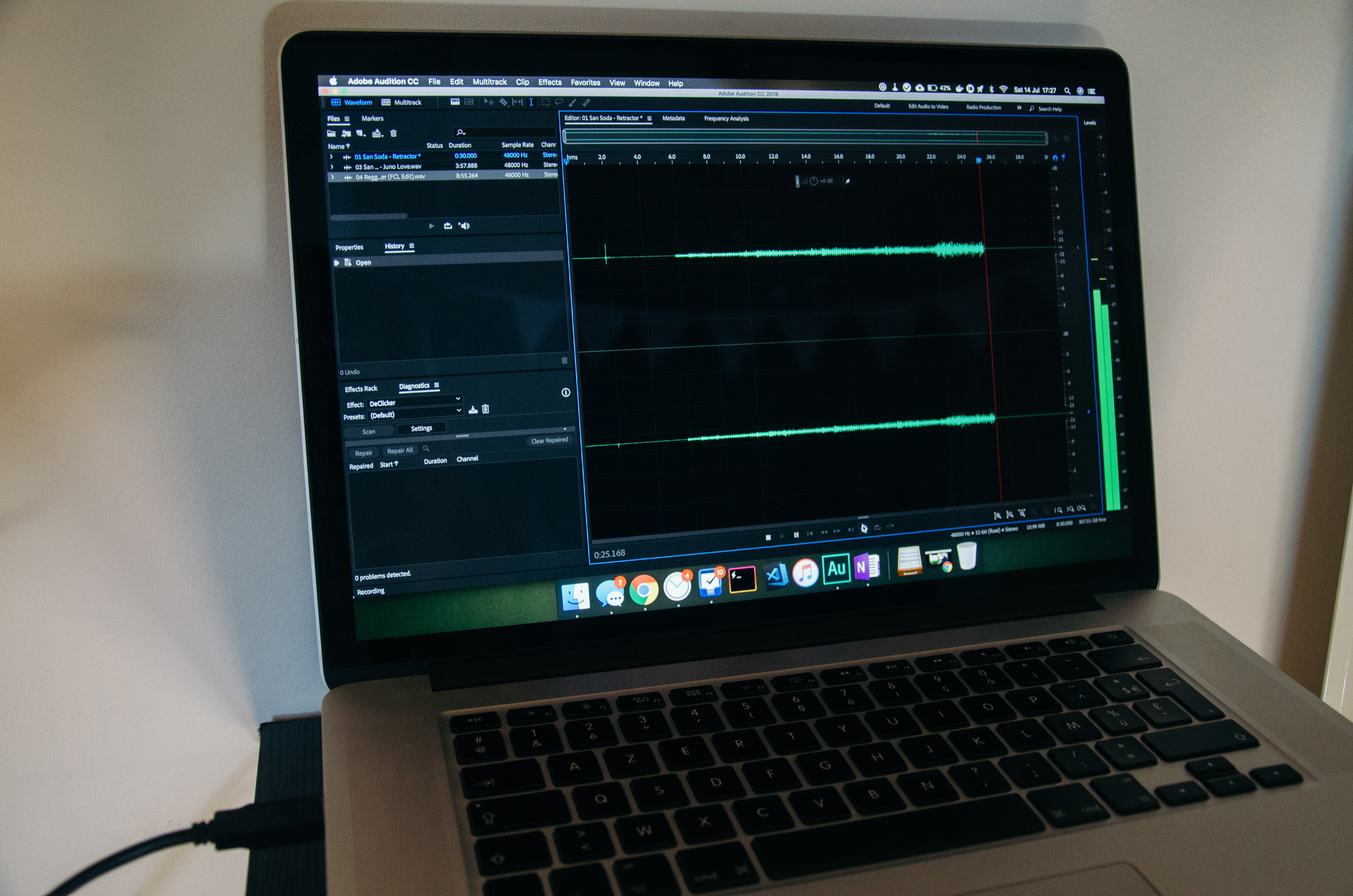Before going more in depth, let me outline that I just scrambled together some tips I found on the internet to try and find a well-suited procedure to digitalise records into music files. This might not be the perfect way, but has given me satisfactory results up to now. If you have any comment or improvement, please get in touch through Twitter @thibmaek :)
Required equipment:
A decent record player (duh)
I'm using my brand-new Pioneer PLX-500's for this. As long as your not using Crosley or Lenco shit, you'll be good.
Decent cartridge, suited for recording
Again using fairly new equipment: Ortofon Concorde MK2 Mix. Though this is a cartridge mostly aimed at DJ usage, it suits well for recording as well since it delivers nice clear sound. It's not totally flat, but comes close enough. Don't use generic or non replaceable cartridges, they suck. A lot Most Audio Technica, Sony, Pioneer turntables come with cartridges which are OK (not great) for recording & playback. If you're looking for a budget cartridge that has always delivered great results get an Ortofon OM Pro S. https://www.ortofon.com/om-pro-s-p-831-n-1444
Brushes to clear out any dust
An audio interface suitable for (preferably USB) output to your laptop
Most mid-range turntables come with a built-in pre-amp which makes them able to output sound over USB & line-in. The Pioneer decks I use have this option as well, but I think I get greater results using the regular phono output and then use the USB output from my DJM-750 MK2 mixer.
Edit 05/02/19: I've started using the Pioneer DJM Rec app way more since it provides more convenience and is easier to grab than having my laptop standby and not going to sleep.
DAW or audio editor software
There's plethora of options out there. Audacity is popular and free but I find its interface & performance sub-par. Personally I started out using Rekordbox' built-in recording module but then switched back to Audition because I can do better edits & have things like De-Click.
If you're like me and, besides recording vinyl exclusive LPs like Thelonious Monk's Les Liaisons Dangereuses 1960, you also record 12"s for DJ play you'll want to start of checking that your equipment is properly aligned.

Using the above tools make sure your turntable is properly leveled, tracking force is set correctly for as per your cartridge's recommended tracking force and your record & stylus are cleaned. You can see the following equipment from the picture above: velvet & microfibre cleaning brushes, Ortofon tracking scale, Ortofon Libelle (level) and a cleaning brush for stylus tip. Alexa unrelated.
Cleaning
I do a double-pass cleaning round where I use a combination of the popular microfibre brush & the lesser used velvet brush. I find that the microfibre brush, which I used the most before regular playback, is great for getting out surface dust and the velours one has a more sticky absorbation to the dust which makes it great for cleaning older records and giving it a last swipe before hitting record.


Safety checks
Doing a few safety checks before recording is advised, since it would be sad to see you just recorded a complete LP and then notice that the pitch is still at +1 or the the channel is still equalized. Therefore go through this checklist before starting:
Pitch is at the 0% mark and locked into its natural speed:

Hi, mids & lows are at the locked 0 level so the sound being recorded is like intended:

Cartridge properly aligned, cap removed & unlocked:

If you have light, pop it up to see any leftover dust on your record.

Recording
Hit record in your DAW, again I like Audition the best, and play your record. I like to reserve some lead-in silent space and then again after the song is finished. This makes it easier to mark the exact point your track starts and also makes sure you don't record a second after the first sound occurs.

If you make a mistake in recording, I usually put the needle back in the lead-in zone of the record, wait for 2-5 seconds and then start the motor again. This way you have a very clear indicator in the wave form of where it went wrong and where you can cut in Audition.
Sometimes, but I must admit I don't fully master the feature, I'll use the remove pops, crackles & noise plugin in Audition. This is especially helpful in the intro & outro where surface noise and crackles could be more audible than when the track is playing its main part.
Edit 5/02/19: I'd like to really recommend the Match Loudness setting in Audition. The output over USB send/return from my mixer is really silent and using this setting to match it to an iTunes song with the same dynamics really helps me improving these home recordings!
Then, all there's left to do is to save it down to a digital file. Usually I'll save it in a WAV copy so I have a very pure recording, put that file on Nextcloud and then on Rekordbox too if I need it to DJ. Otherwise for iTunes I export it as 256kbps M4A as well.
Conclusion
Hopefully this article was insightful and provides some good tips if you want to start or improve your home recording. Let me know if you have any advice @thibmaek on Twitter.